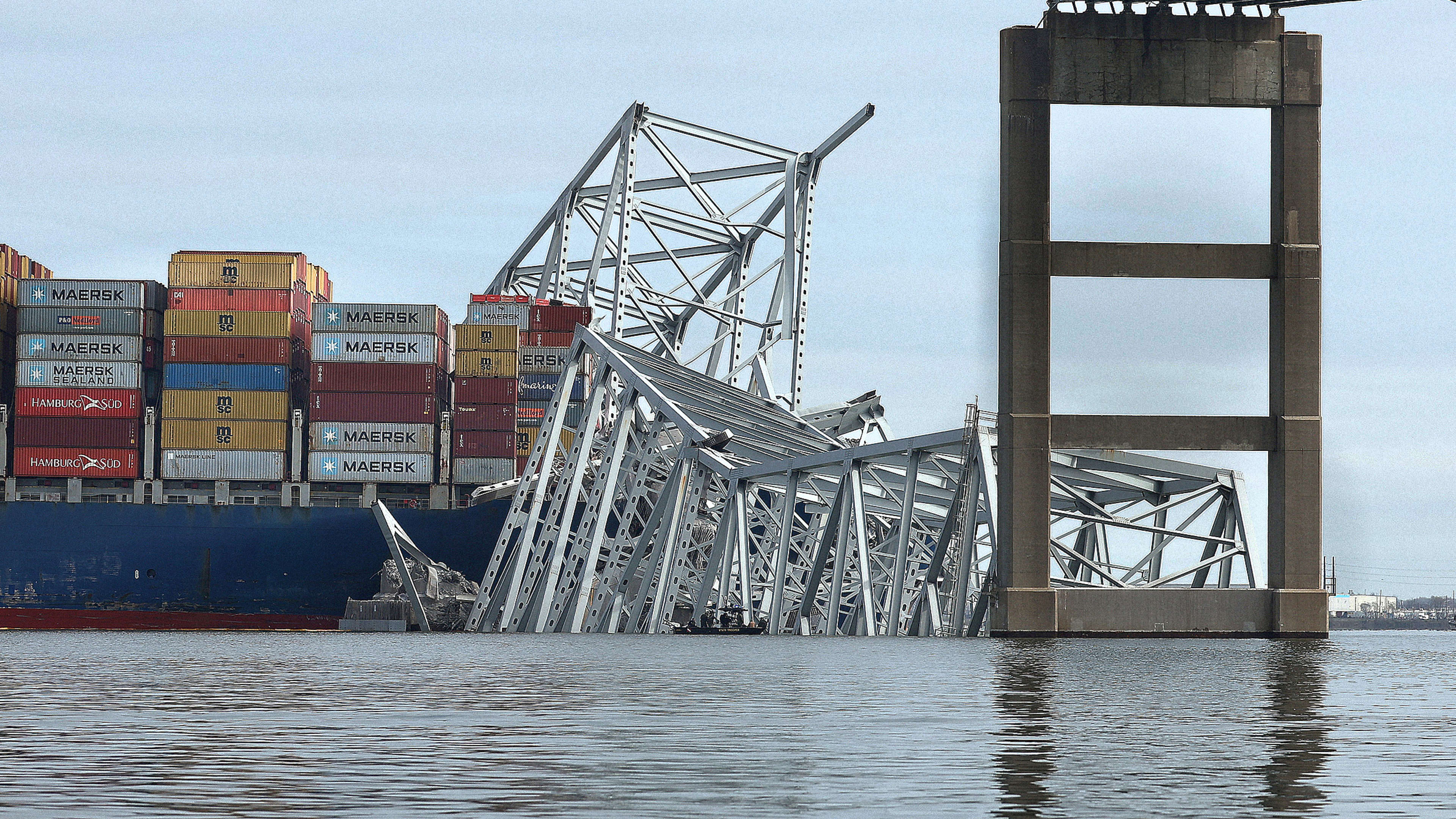When the cargo ship Dali lost power shortly after leaving the port of Baltimore early Tuesday morning, there was almost no way of stopping it. Traveling at eight knots, or about nine miles per hour, and carrying more than 4,600 cargo containers stacked up nine containers high, the ship drifted directly into one of the piers supporting the Francis Scott Key bridge, a huge chunk of which immediately crashed into the water. The Dali, with a total weight of more than 116,000 tons, was in a blackout and rendered incapable of either slowing down or turning out of the way in time.
It was a rare concurrence of events that turned a standard operation into a disaster. “With this catastrophic of a loss, to lose propulsion and to lose your rudder, you have none of those systems to then counter the inertia of moving forward at eight knots,” says Morgan McManus, captain of the training ship at SUNY Maritime College, in Throggs Neck, New York. “At that point, Newton’s law is taking over, and you’re drifting until resistance slows you down or, unfortunately, in this case, you collide with something.”
In most situations, navigating a massive ship like this under a bridge is a fairly straightforward operation and one that happens hundreds of times a day around the world, according to McManus. With more than 30 years of experience on ships ranging from massive tankers to offshore drilling rigs, McManus says the captain of this kind of ship would likely have 10 to 20 years of experience, and the ship itself would have technology on board to help avoid such a collision.
Ships today are equipped with redundant systems for maintaining steering control, typically including two auto-pilot systems in addition to hand-steering controls, as well as alarm systems that can alert crews to complications. “You get a lot of prewarnings on modern ships before you actually have an incident happen,” McManus says.
For a ship this size, there would typically be four people involved in maneuvering it under a bridge. Three would be crew of the ship, including its captain, and the fourth would be a local harbor pilot who would be advising the crew on navigating the shipping channel. “A harbor pilot basically has the area that they’re responsible for memorized,” McManus says. “They can take a blank piece of paper and draw you the nautical chart, down to the depths and the buoys. They know those waters inside and out.”
Even without this specialized knowledge, ship crews are provided very clear indications of where to go. Most bridges are outfitted with red and green lights that indicate where ships should travel. “You want to put the ship right under the green light,” McManus says. “That’s the safest part to pass.”
There are still some ways to steer a massive ship without power, but they require more space and time than the Dali had. At slower speeds, it’s possible to drop anchors and drag them on the seafloor to gradually pull the ship to a halt, but McManus notes that this requires precision in the amount of anchor chain is released. Too little, and the anchors won’t cause enough drag on the seafloor; too much, and they’ll catch, ripping away at the sides of the ship and likely breaking off completely. “It’s a very dangerous maneuver,” McManus says. “They just didn’t have time to do it.”
Without power, the Dali was essentially out of control, and what should have been a routine passage turned to devastation. “It’s horrific, unfortunate timing of where they were to have that event happen,” McManus says.
Recognize your brand’s excellence by applying to this year’s Brands That Matter Awards before the final deadline, June 7.
Sign up for Brands That Matter notifications here.
